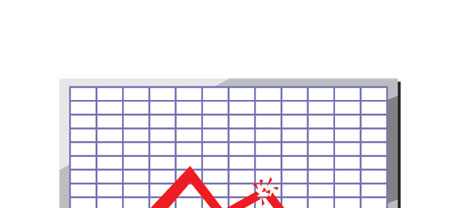For people with a site as well as an application, speed is very important. The swifter your site loads and then the swifter your web applications perform, the better for everyone. Given that a site is only an offering of files that connect with each other, the devices that keep and access these files play an important role in web site effectiveness.
Hard disks, or HDDs, were, right until the past several years, the more effective devices for storing information. Nevertheless, in recent times solid–state drives, or SSDs, are already becoming popular. Look at our comparison chart to view whether HDDs or SSDs are more effective for you.
1. Access Time
Resulting from a revolutionary new method to disk drive general performance, SSD drives make it possible for faster file access speeds. Having an SSD, data file accessibility times are much lower (as small as 0.1 millisecond).
HDD drives make use of rotating disks for files storage purposes. Every time a file is being used, you need to await the right disk to reach the appropriate place for the laser beam to access the file in question. This ends in a regular access speed of 5 to 8 milliseconds.
2. Random I/O Performance
On account of the brand–new significant file storage solution adopted by SSDs, they provide better file access rates and quicker random I/O performance.
For the duration of our lab tests, all of the SSDs revealed their capability to take care of a minimum of 6000 IO’s per second.
Hard drives feature reduced data access rates due to older file storage space and accessibility concept they are by making use of. Additionally they show substantially slower random I/O performance when compared to SSD drives.
During our lab tests, HDD drives addressed around 400 IO operations per second.
3. Reliability
SSD drives are created to include as less rotating components as possible. They utilize a comparable concept to the one employed in flash drives and are more dependable compared with regular HDD drives.
SSDs provide an average failing rate of 0.5%.
With an HDD drive to operate, it needs to spin a couple of metal disks at over 7200 rpm, having them magnetically stable in the air. They have a great deal of moving components, motors, magnets along with other gadgets jammed in a tiny place. Therefore it’s no surprise that the common rate of failure of any HDD drive ranges somewhere between 2% and 5%.
4. Energy Conservation
SSD drives work nearly silently; they don’t generate excess warmth; they don’t call for more cooling down options and take in considerably less power.
Tests have shown the common electric power consumption of an SSD drive is between 2 and 5 watts.
HDD drives are renowned for getting noisy. They demand far more electric power for cooling down purposes. On a web server which includes lots of HDDs running all the time, you’ll need a great deal of fans to keep them cooler – this will make them much less energy–economical than SSD drives.
HDDs consume between 6 and 15 watts.
5. CPU Power
SSD drives provide for faster data file access rates, which, in turn, allow the processor to accomplish data file calls much quicker and afterwards to go back to different duties.
The regular I/O wait for SSD drives is only 1%.
HDD drives permit sluggish accessibility rates when compared with SSDs do, which will result in the CPU being required to wait around, whilst reserving assets for the HDD to discover and return the demanded file.
The regular I/O delay for HDD drives is approximately 7%.
6.Input/Output Request Times
In real life, SSDs perform as perfectly as they did during Simple Affordable Hosting’s trials. We ran a full platform backup using one of the production machines. Throughout the backup operation, the common service time for I/O queries was indeed below 20 ms.
All through the exact same tests sticking with the same web server, now fitted out using HDDs, overall performance was noticeably slower. All through the server back up process, the normal service time for I/O calls varied between 400 and 500 ms.
7. Backup Rates
You can feel the real–world added benefits of using SSD drives day–to–day. For example, with a server loaded with SSD drives, a complete data backup will take simply 6 hours.
In the past, we’ve worked with principally HDD drives with our machines and we’re familiar with their efficiency. On a hosting server furnished with HDD drives, an entire hosting server back–up usually takes about 20 to 24 hours.
To be able to immediately add to the performance of one’s web sites and not have to alter any kind of code, an SSD–equipped web hosting solution is really a good option. Take a look at Simple Affordable Hosting’s Linux shared hosting packages – these hosting services include fast SSD drives and are available at affordable prices.
Hepsia
- Live Demo
Service guarantees
- Each one of our Virtual Private Servers is configured for you free. 99.9% network uptime. Full root server access.
Compare our prices
- Examine the allocations and capabilities offered by our Virtual Private Servers. You could start off with a smaller VPS configuration and move up with simply a click as your demands increase.
- Compare our hosting plans
Contact Us
- You can make contact with us 24/7/365 by email or by utilizing our extra–fast ticketing system. Simple Affordable Hosting offers a 1–hour response time guarantee.














